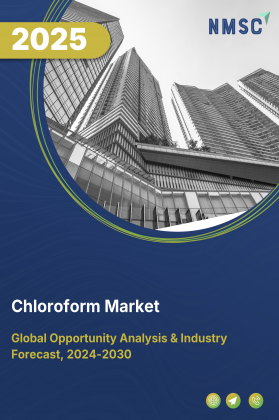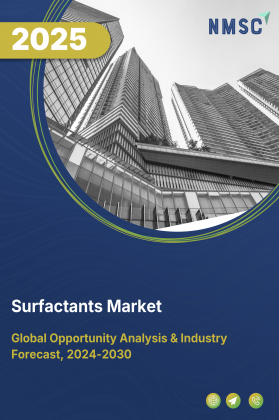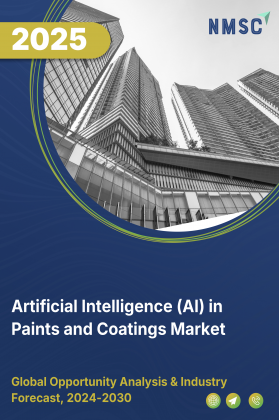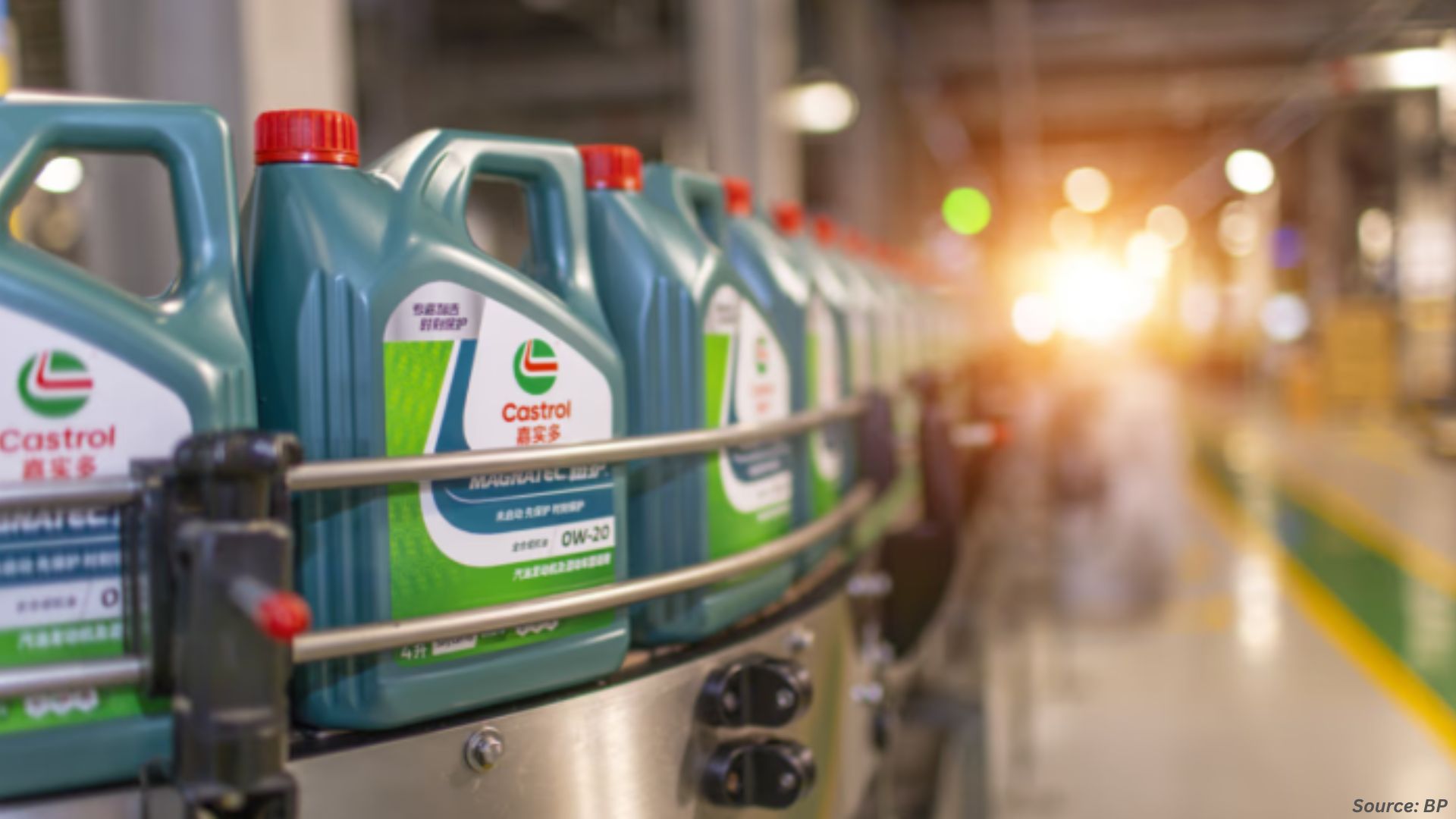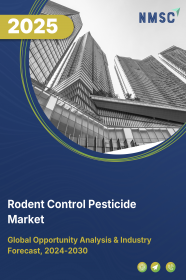
Rodent Control Pesticide Market by Type (Anticoagulants (First Generation Anticoagulants and Second Generation Anticoagulants) and Non-anticoagulants (Bromethalin, Zinc Phosphide, and Strychnine)), By Rodent Type (Mice, Rat, Chipmunk, Hamster, and Others), by Form (Spray, Powder, Pellet, and Others), by Distribution Channel (Online Channels and Offline Channels), and by End User (Agricultural, Residential, Commercial, and Industrial) – Global Opportunity Analysis and Industry Forecast 2025–2030
Rodent Control Pesticide Industry Overview
The global Rodent Control Pesticide Market size was valued at USD 6.14 billion in 2024, and is expected to be valued at USD 6.48 billion by the end of 2025. The industry is projected to grow further, hitting USD 8.44 billion by 2030, with a CAGR of 5.5% between 2025 and 2030.
The rodent control pesticide market is experiencing significant evolution, driven by the growing need for food and crop protection, increased public awareness of hygiene and safety, and the effects of climate change contributing to rising pest populations. These trends support market growth by highlighting the essential role of rodent control in agriculture and public health. However, stringent regulatory compliance remains a key restraint, potentially limiting adoption. Despite this, technological advancements present strong opportunities for developing smarter, safer, and more eco-friendly solutions. This shift is poised to enhance efficiency, meet regulatory demands, and expand market potential.
The Growing Need for Food & Crop Protection Fuels the Growth of the Market
The increasing demand for food and crop protection is a fundamental driver propelling the rodent control pesticide market growth. With the global population projected to reach nearly 10 billion by 2050, the need to safeguard agricultural yields from pest damage is becoming increasingly critical. Rodents pose a significant threat to crops both pre-and post-harvest, leading to substantial losses. This necessity to ensure food security for a growing population directly translates to a higher demand for effective rodent control solutions, including pesticides. Moreover, there is a rising demand for organically and sustainably produced food, which creates an opportunity for developing safer rodenticides that align with these consumer preferences. This increasing need contributes significantly to the overall market size and presents growth potential for the pest management solutions segment.
Growing Public Awareness Regarding Hygiene and Safety Boosts Market Growth
The post-pandemic period led to a sharp increase in public awareness around hygiene and safety, becoming a major factor driving the rodent control pesticide market trends. Rising concerns about health risks caused by pest infestations, particularly rodents, are pushing individuals and businesses to seek professional pest control services. Rodents are known carriers of various diseases, and the heightened focus on preventing such health threats is increasing the demand for effective control methods, including rodenticides handled by licensed professionals. This awareness is further reinforced by findings from the Global Health Security (GHS) Index, which highlights that the global average score for prevention against the emergence or release of pathogens remains low at 28.4 out of 100, showing that most countries are still unprepared for future health threats. As public understanding of both the health dangers of infestations and the potential hazards of chemical treatments grows, there is also increasing preference for safer, eco-friendly rodent control solutions, driving demand for professional and innovative pest control services.
Changes in Weather Patterns and Increasing Global Temperatures Further Boost the Market
Changes in weather patterns and increasing global temperatures, potentially linked to climate change, are emerging as significant drivers for the pest control industry, including the rodent control pesticide market demand. As temperatures rise, rodent populations are projected to increase, particularly in regions that were traditionally colder. This expansion of rodent habitats and the potential for increased breeding cycles due to warmer conditions are leading to a greater need for effective control measures. Consequently, the demand for rodenticides is likely to rise in response to these changing environmental conditions, contributing to the industry size and offering continued growth potential.
Stringent Requirements for Regulatory Compliance Hinder the Growth of the Market
One of the primary restraints facing the industry is the stringent requirement for regulatory compliance. Pest control companies and chemical manufacturers must adhere to a complex web of federal and state regulations concerning pesticide usage, chemical reporting, safety standards, and environmental protection. Agencies like the Environmental Protection Agency (EPA) set these strict guidelines to ensure the safe and effective use of pesticides while minimizing risks to human health and the environment. Staying up-to-date and compliant with these evolving regulations can be costly and time-consuming for businesses, potentially hindering innovation and increasing operational costs. Furthermore, the registration and approval process for new pesticides can be lengthy and expensive, posing a significant challenge to market entry for novel solutions.
Technological Advancements Creates Future Growth Opportunities for the Market
Technological advancements present a significant opportunity for players in the rodenticides market. The integration of technologies like drones equipped with spraying capabilities allows for safer access to remote areas and more efficient coverage of larger areas, enabling quicker identification and treatment of rodent infestations. Furthermore, the development and implementation of smart traps can provide real-time monitoring and targeted interventions, reducing the need for widespread pesticide application. Data analytics plays an increasingly crucial role, enabling experts to predict and prevent infestations by analysing factors such as weather patterns and pest behaviour. Embracing these technological innovations can enhance the efficiency and effectiveness of rodent control services, provide a competitive edge, and contribute to more sustainable pest management practices.
Market Segmentations and Scope of the Study
The rodent control pesticide market report is segmented on the basis of type, rodent type, form, distribution channel, end user, and region. On the basis of type, the market is divided into anticoagulants, and non-anticoagulants. Based on anticoagulants, the market is further divided into first generation and second-generation anticoagulants. Based on non-anticoagulants, the market is further segmented into bromethalin, zinc phosphide, strychnine, and cholecalciferol. On the basis of rodent type, the market is grouped into mice, rat, chipmunk, hamster, and others. On the basis of form, the market is divided into spray, powder, pellet, and others. On the basis of distribution channel, the market is segmented into online channels and offline channels. On the basis of end user, the market is grouped into agricultural, residential, commercial, and industrial. Regional breakdown and analysis of each of the aforesaid segments includes regions comprising of North America, Europe, Asia-Pacific, and RoW.
Geographical Analysis
North America holds the dominant market share in the global rodent control industry, with the U.S. leading in terms of consumer-driven sales. A key factor shaping the market trends in this region is the regulatory shift, influencing how pest control products are developed and used. Additionally, the overall growth of the pest control chemical manufacturing sector is supported by the rising global need for food security and crop protection. Heightened public awareness around hygiene and health risks, especially post-pandemic, continues to fuel the demand for professional rodent control services across the U.S., reinforcing the region's market leadership.
Moreover, in Europe the pest management is strongly guided by regulatory frameworks and a push towards sustainable pest management solutions. The European Union, for instance, is actively reforming its Common Agricultural Policy to support the European Green Deal, which has implications for pesticide usage. This regulatory landscape is likely influencing the market trends in Europe, favouring greener and more environmentally friendly approaches.
The Asia-Pacific region presents a dynamic and rapidly growing market, with India and China being key players. In India, the pest control market size reached USD 1.7 billion in 2023 and is projected to reach USD 3.03 billion by 2032. This growth is driven by expanding urbanization, increased awareness of health and hygiene, and the crucial role of pest control in agriculture. Companies like BASF and Syngenta are launching highly targeted products catering to the specific crop structures, pests, and climatic conditions in India and China. This focus on local conditions highlights the specific market needs being addressed in this region.
Finally, the Rest of the World encompasses diverse regions with their own unique challenges and opportunities. In low and middle-income countries, there's a significant concern regarding the hazardous use of metal phosphides for rodent control, highlighting the need for alternative domestic pest management approaches tailored to local contexts, whether rural or urban. In Latin America, Syngenta launched INZAK ZEON insecticide in Brazil, indicating specific product developments catering to the pest control needs in that region. Across these diverse areas within the Rest of the World, factors like agricultural practices, public health concerns, and regulatory environments shape the specific market trends and growth potential for pest control solutions.
Strategic Innovation and Sustainability Efforts Reshape the Rodent Control Pesticide Industry
Key players in the global rodent control pesticide industry are strategically adapting to evolving market trends by focusing on innovation and sustainability. Recent developments include the exploration of new modes of action to combat resistance, mirroring trends in the broader agrochemical industry where companies like BASF with Cimegra (Broflanilide) and Efficon (Dimpropyridaz) are leading the way in insecticide innovation. Moreover, the increasing demand for food and crop protection due to a rising global population, coupled with heightened public awareness of hygiene, presents substantial opportunities for companies that can offer effective and responsible rodent control solutions.
The market size is expected to grow, and companies that prioritize research and development in greener chemistries and advanced technologies are poised to capture a larger market share in this evolving landscape.
Key Benefits
-
The report provides quantitative analysis and estimations of the market from 2025 to 2030, which assists in identifying the prevailing market opportunities.
-
The study comprises a deep-dive analysis of market including the current and future trends to depict prevalent investment pockets in the market.
-
Information related to key drivers, restraints, and opportunities and their impact on the market is provided in the report.
-
Competitive analysis of the players, along with their market share is provided in the report.
-
SWOT analysis and Porters Five Forces model is elaborated in the study.
-
Value chain analysis in the market study provides a clear picture of roles of stakeholders.
Rodent Control Pesticide Market Key Segments
By Type
-
Anticoagulants
-
First Generation Anticoagulants
-
Second Generation Anticoagulants
-
-
Non-anticoagulants
-
Bromethalin
-
Zinc Phosphide
-
Strychnine
-
Cholecalciferol
-
By Rodent Type
-
Mice
-
Rat
-
Chipmunk
-
Hamster
-
Others
By Form
-
Spray
-
Powder
-
Pellet
-
Others
By Distribution Channel
-
Online channels
-
Offline channels
By End User
-
Agricultural
-
Residential
-
Commercial
-
Industrial
By Region
-
North America
-
The U.S.
-
Canada
-
Mexico
-
-
Europe
-
The UK
-
Germany
-
France
-
Italy
-
Spain
-
Denmark
-
Netherlands
-
Finland
-
Sweden
-
Norway
-
Russia
-
Rest of Europe
-
-
Asia-Pacific
-
China
-
Japan
-
India
-
South Korea
-
Australia
-
Indonesia
-
Singapore
-
Taiwan
-
Thailand
-
Rest of Asia-Pacific
-
-
RoW
-
Latin America
-
Middle East
-
Africa
-
Key Players
-
BASF SE
-
Bayer Aktiengesellschaft
-
Syngenta Corporation
-
Rentokil Initial Plc
-
Neogen Corporation
-
Liphatech, Inc.
-
JT Eaton & Co., Inc.
-
PelGar International
-
Bell Laboratories, Inc.
-
Anticimex
-
UPL Limited
-
SenesTech, Inc.
-
Impex Europa S.L.
-
Orcal Inc.
-
Kalyani Industries Limited
REPORT SCOPE AND SEGMENTATION:
|
Parameters |
Details |
|
Market Size in 2024 |
USD 6.14 billion |
|
Revenue Forecast in 2030 |
USD 8.44 billion |
|
Growth Rate |
CAGR of 5.5% from 2025 to 2030 |
|
Analysis Period |
2024–2030 |
|
Base Year Considered |
2024 |
|
Forecast Period |
2025–2030 |
|
Market Size Estimation |
Billion (USD) |
|
Growth Factors |
. |
|
Countries Covered |
28 |
|
Companies Profiled |
15 |
|
Market Share |
Available for 10 companies |
|
Customization Scope |
Free customization (equivalent to up to 80 working hours of analysts) after purchase. Addition or alteration to country, regional, and segment scope. |
|
Pricing and Purchase Options |
Avail customized purchase options to meet your exact research needs. |

















 Speak to Our Analyst
Speak to Our Analyst



